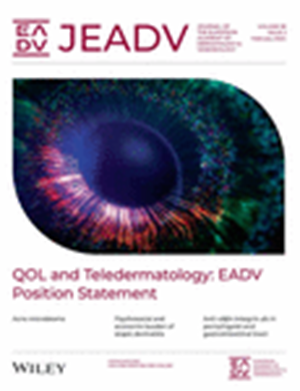Deep learning predicted perceived age is a reliable approach for analysis of facial ageing: A proof of principle study
Abstract
Background
Perceived age (PA) has been associated with mortality, genetic variants linked to ageing and several age-related morbidities. However, estimating PA in large datasets is laborious and costly to generate, limiting its practical applicability.
Objectives
To determine if estimating PA using deep learning-based algorithms results in the same associations with morbidities and genetic variants as human-estimated perceived age.
Methods
Self-supervised learning (SSL) and deep feature transfer (DFT) deep learning (DL) approaches were trained and tested on human-estimated PAs and their corresponding frontal face images of middle-aged to elderly Dutch participants (n = 2679) from a population-based study in the Netherlands. We compared the DL-estimated PAs with morbidities previously associated with human-estimated PA as well as genetic variants in the gene MC1R; we additionally tested the PA associations with MC1R in a new validation cohort (n = 1158).
Results
The DL approaches predicted PA in this population with a mean absolute error of 2.84 years (DFT) and 2.39 years (SSL). In the training–test dataset, we found the same significant (p < 0.05) associations for DL PA with osteoporosis, ARHL, cognition, COPD and cataracts and MC1R, as with human PA. We also found a similar but less significant association for SSL and DFT PAs (0.69 and 0.71 years per allele, p = 0.008 and 0.011, respectively) with MC1R variants in the validation dataset as that found with human, SSL and DFT PAs in the training–test dataset (0.79, 0.78 and 0.71 years per allele respectively; all p < 0.0001).
Conclusions
Deep learning methods can automatically estimate PA from facial images with enough accuracy to replicate known links between human-estimated perceived age and several age-related morbidities. Furthermore, DL predicted perceived age associated with MC1R gene variants in a validation cohort. Hence, such DL PA techniques may be used instead of human estimations in perceived age studies thereby reducing time and costs.


 求助内容:
求助内容: 应助结果提醒方式:
应助结果提醒方式:


